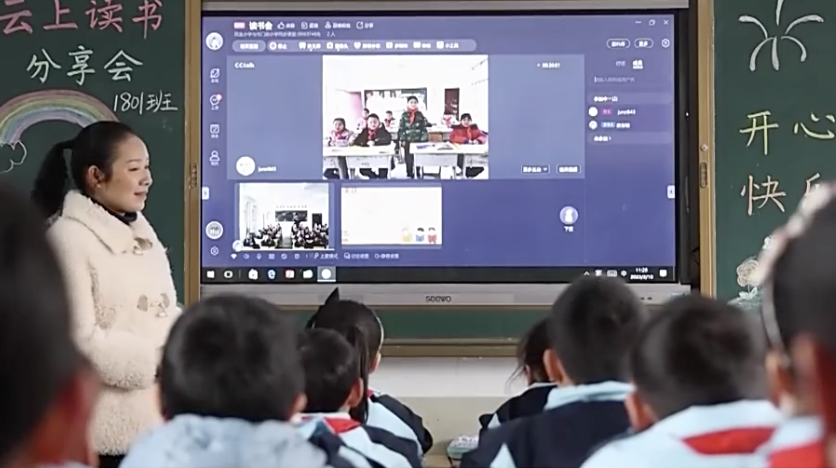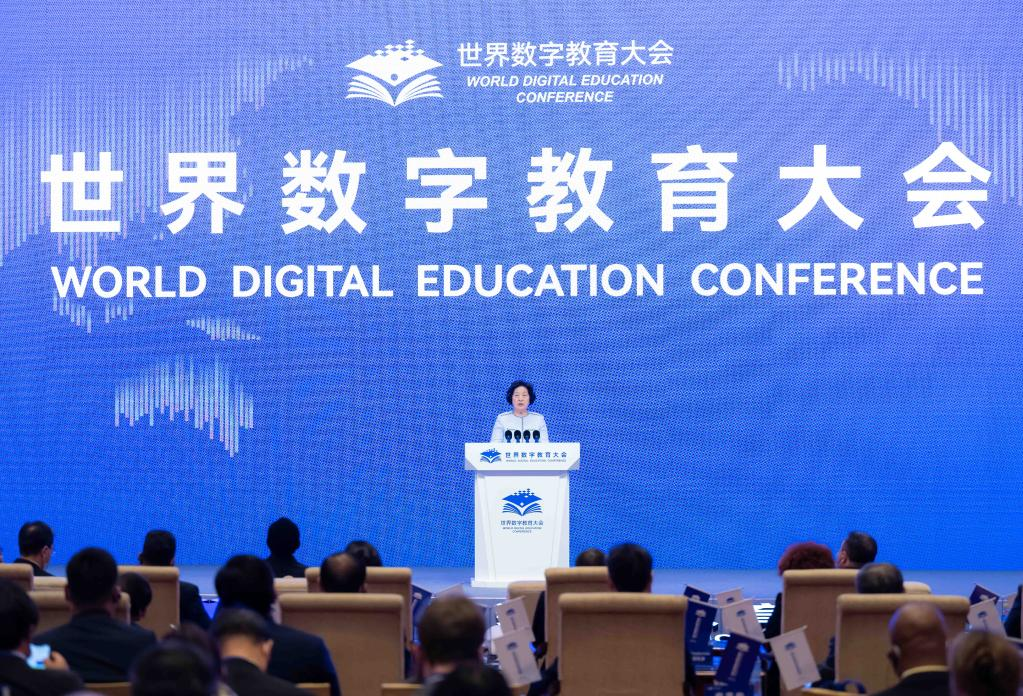
Students in Shimenqian Primary School are having an online reading sharing session with students in urban schools, Xiamadu Town, central China's Hunan Province. /China Media Group.
Students in Shimenqian Primary School are having an online reading sharing session with students in urban schools, Xiamadu Town, central China's Hunan Province. /China Media Group.
At the beginning of the new semester, students in Shimenqian Primary School are sharing the books they read over winter holidays through an online reading sharing session with students living in cities.
Located in a remote mountainous area in Xiamadu Town in central China's Hunan Province, this primary school has fewer than 20 students and less education resources compared to urban schools.
However, with the implementation of digital education, students here can now attend the same classes and access educational resources as their urban peers.
The school has jointly established an online classroom with several high-quality schools in the city, Jiang Xianglei, the principal of Shimenqian Primary School told the China Media Group.
As a result, educational resources have become much more abundant, and students can now attend classes that were previously unavailable at the school, such as music and artificial intelligence, according to Jiang.
Like Shimenqian Primary School, many other schools located in rural areas across China now have access to digital educational resources.
Equitable education
China is working on introducing more high-quality education services and products, said Chinese Vice Premier Sun Chunlan during the World Digital Education Conference held this week in Beijing. The efforts include increasing access to digital educational resources, particularly for rural areas across China.
Up until now, 290 million students across China, including those in remote areas, can receive high-quality education, said Sun, noting that information technology has a revolutionary impact on the development of education.

Chinese Vice Premier Sun Chunlan addresses the opening of the World Digital Education Conference in Beijing, capital of China, February 13, 2023. /Xinhua
Chinese Vice Premier Sun Chunlan addresses the opening of the World Digital Education Conference in Beijing, capital of China, February 13, 2023. /Xinhua
The application of information technology in education is not only aiding in the equitable distribution of educational resources, but also providing advanced teaching methods and materials to schools and teachers in underdeveloped regions.
As of 2020, over 80 percent of teachers in primary and junior high schools across China have already begun incorporating information technology into their teaching activities.
Equitable education
In addition to providing access to a wider range of educational resources, digital education has become an effective way to improve the quality of education in rural classrooms, as well as narrowing the education gap between urban and rural areas.
Over the past decade, China has been pushing to integrate information technology into its education system, as highlighted in the report to the 20th National Congress of the Communist Party of China.
By the end of 2020, all elementary and junior high schools in China have been connected to the Internet, compared with 25 percent in 2012, and 99.5 percent of schools had built multimedia classrooms by 2021.
In March 2022, China launched "Smart Education of China", a public online service platform focuses on learning, teaching and school governance.
The platform provides higher-quality educational resources for rural primary and secondary school in less developed central and western China. Also, universities in the west can get quality resources provided by universities in the east.
According to a report released during a conference, the number of available massive open online courses (MOOCs) in China has surpassed 64,500 since its launch in 2013. China currently leads the world in both the number of MOOCs and the number of attendees of open online courses.
It is remarkable that even rural schools in the remotest areas of China are connected to the Internet, breaking the "information isolated island," said Jose Luis Bernal, Mexican Ambassador to China.
The government provides a lot of subsidies to these schools, and over the past 15 years, China's international education quality assessments in fields such as mathematics, science and engineering are among the best rankings in the world, he added.
China plans to further improve its online education system by 2025, including establishing an interconnected system of online education platforms and a resource pool of online courses that covers all subjects and all version of textbooks, according to the Ministry of Education.